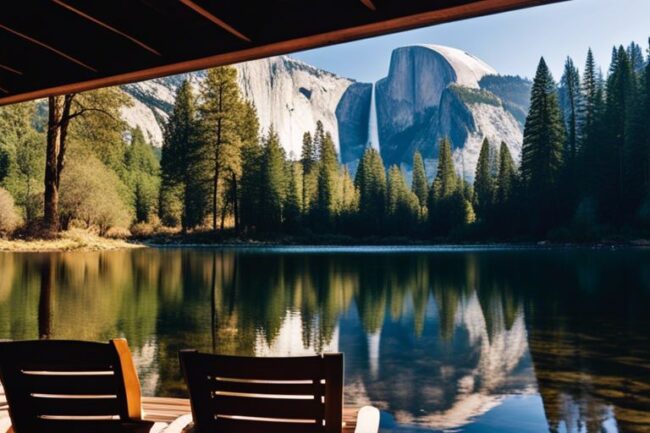Most captivating and awe-inspiring, Yosemite National Park in California is a true gem of nature’s beauty. With its towering granite cliffs, majestic waterfalls, ancient sequoia trees, and diverse wildlife, this renowned park is a must-visit destination for nature lovers and outdoor enthusiasts alike. Join us on a journey through this poetic landscape and discover why Yosemite is considered one of nature’s greatest masterpieces, a sanctuary where time stands still and the wonders of the natural world mesmerize all who venture within its borders.
Key Takeaways:
- Scenic Beauty: Yosemite National Park is a nature’s masterpiece, boasting breathtaking landscapes with towering waterfalls, giant sequoias, and majestic granite cliffs.
- Outdoor Activities: Visitors can enjoy a variety of outdoor activities such as hiking, rock climbing, camping, bird watching, and photography in the park’s diverse ecosystems.
- Conservation Importance: Yosemite serves as a sanctuary for a wide range of plant and animal species and plays a vital role in preserving the natural beauty and biodiversity of California.
Geology and Landscapes
Granite Cliffs and Waterfalls
The granite cliffs of Yosemite National Park tower majestically, formed millions of years ago through powerful geological forces. Carved by glaciers and rivers, these magnificent cliffs provide a dramatic backdrop to the park’s famous waterfalls, cascading down in a symphony of nature’s beauty.
Valleys and Meadows
Any visit to Yosemite is incomplete without exploring the tranquil valleys and lush meadows that dot the landscape. Framed by towering trees and surrounded by rugged peaks, these valleys offer a peaceful retreat for visitors seeking to connect with the park’s serene beauty.
Plus, the meadows burst into a riot of color during spring and early summer, as wildflowers carpet the ground in a breathtaking display. The gentle landscapes of Yosemite’s valleys and meadows are a stark contrast to the towering cliffs, offering a harmonious balance to the park’s diverse geology.
Flora and Fauna
Giant Sequoias and Diverse Forests
Some of the most iconic inhabitants of Yosemite National Park are the giant sequoias, one of the largest and oldest trees on Earth. These towering beauties can be found in select groves within the park, such as the Mariposa Grove and the Tuolumne Grove. The diverse forests of Yosemite, ranging from lush green meadows to dense pine forests, provide a habitat for a wide variety of plant and tree species.
Wildlife Habitats and Species
Wildlife thrives in the varied landscapes of Yosemite National Park, with diverse habitats supporting an array of species. From black bears and mule deer to bobcats and mountain lions, the park is home to a rich tapestry of wildlife. Birdwatchers can spot over 250 species of birds, including the majestic bald eagle soaring through the skies.
This harmonious coexistence of plants and animals in Yosemite creates a balanced ecosystem where each species plays a crucial role in maintaining the park’s natural beauty and biodiversity.
Human History and Exploration
Indigenous Peoples and Early Settlers
History tells us that the Yosemite Valley was first inhabited by the Ahwahneechee people, who lived in harmony with the land for thousands of years before European settlers arrived. They revered the towering granite cliffs, abundant wildlife, and cascading waterfalls that make Yosemite so unique.
Conservation Efforts and Park Establishment
Park rangers and conservationists have worked tirelessly to preserve Yosemite’s natural beauty for future generations. In 1864, President Abraham Lincoln signed the Yosemite Grant, stipulating that the land be preserved for public use and recreation, marking the first time in history that the federal government set aside land for preservation and enjoyment.
A century later, in 1964, President Lyndon B. Johnson signed the Wilderness Act, protecting over 94% of the park as wilderness, ensuring that its unblemished landscapes and diverse ecosystems would be safeguarded for years to come.
Recreation and Activities
Hiking Trails and Scenic Drives
Your adventure in Yosemite National Park is incomplete without exploring its diverse hiking trails and breathtaking scenic drives. To immerse yourself in the park’s natural beauty, initiate on popular trails like Mist Trail to witness the majestic waterfalls or drive along Tioga Road for sweeping views of the high country.
Camping and Winter Sports
To fully experience Yosemite’s wilderness, camping under the stars is a must-do activity. Whether you prefer backcountry camping or staying at one of the park’s campgrounds, the opportunity to connect with nature is unparalleled. In winter, the park transforms into a winter wonderland, offering activities like snowshoeing, cross-country skiing, and ice skating for a different kind of outdoor adventure.
Plus, Yosemite National Park is a haven for winter sports enthusiasts. The park offers various activities such as snowshoeing, skiing, and snowboarding during the snowy months. Visitors can enjoy the serene beauty of snow-covered landscapes while engaging in these exhilarating winter sports.
Final Words
Conclusively, Yosemite National Park stands as a testament to the raw beauty and power of nature. Its towering granite cliffs, pristine waterfalls, and diverse ecosystems make it a true masterpiece of the natural world. John Muir’s words come to mind as he once said, “The clearest way into the Universe is through a forest wilderness.” Yosemite indeed offers a clear path into the heart of nature, inviting visitors to connect with the wonder and majesty of the wilderness. It is a place that truly captivates the soul and leaves a lasting impression on all who wander its magnificent landscapes.
FAQ
Q: What is Yosemite National Park?
A: Yosemite National Park is a breathtaking natural wonder located in California, known for its majestic granite cliffs, waterfalls, giant sequoia trees, and diverse ecosystems.
Q: What are some popular attractions in Yosemite National Park?
A: Some popular attractions in Yosemite National Park include Half Dome, El Capitan, Yosemite Falls, Glacier Point, and Mariposa Grove.
Q: When is the best time to visit Yosemite National Park?
A: The best time to visit Yosemite National Park is during the spring and fall when the weather is pleasant, the crowds are smaller, and the park’s natural beauty is at its peak.
Q: What outdoor activities can visitors enjoy in Yosemite National Park?
A: Visitors to Yosemite National Park can enjoy a wide range of outdoor activities such as hiking, rock climbing, camping, bird watching, fishing, and photography.
Q: Are there accommodations available in Yosemite National Park?
A: Yes, there are accommodations available in Yosemite National Park ranging from campgrounds and rustic cabins to luxurious hotels like The Ahwahnee, providing options for every type of traveler.

